Magnesium sulfate, known chemically as Epsom salt, has been a long-standing gardening mainstay for increasing plant health and yield. Tomato plants are very important when it comes to Epsom salt. It provides necessary nutrients, including magnesium, which participates in photosynthesis and the formation of chlorophyll. As a result, plants grow more vigorously with greener leaves and look healthier overall. Moreover, use of Epsom salt can prevent common problems, including blossom end rot and deficiencies in minerals, which can considerably reduce crop yield and tomato quality.
In the following paragraphs, we will discuss the various ways by which tomato plants benefit from using Epsom salts as well as what time and how to apply it. We shall also provide concrete tips that will enable you get the most out of your tomato plants thus resulting in higher yields that are also more healthy. Just knowing about Epsom salts role whether you are an experienced gardener or new one makes a lot of difference in your success as a farmer.
Why Use Epsom Salt for Tomato Plants?
Epsom salt is primarily used in tomato growing because it contains magnesium, an essential nutrient lacking in most soils. Magnesium is very important in photosynthesis where it acts as the central atom of chlorophyll molecule and enables plants to convert sunlight into energy. It also enhances absorption of other minerals such as nitrogen and phosphorous. In this regard, Epsom salt when applied can help correct magnesium deficiency symptoms like leaf yellowing, promote vigorous growth, and improve the taste of tomatoes. As a result, blossom-end rot linked with calcium absorption disorders is reduced by increased total nutrient transportability throughout the plant.
What are the Benefits of Using Epsom Salt for Tomato Plants?
Epsom salt provides many advantages to tomato plants, mainly through its supply of magnesium and sulfur, which are essential for healthy plant development. Magnesium facilitates photosynthesis by boosting chlorophyll synthesis and enhancing energy conversion within plants. It should be applied typically at 1 tablespoon per foot of plant height to reduce Mg deficiency signs such as leaf yellowing and stunted growth.
It also supports strong growth while improving enzyme function and protein synthesis which combat diseases. Besides aiding in the uptake of nitrogen, phosphorous, and other micronutrients from the soil, Epsom salt helps to maximize productiveness together with fruit quality. Dissolve one tablespoonful in a gallon of water for application to soil every two weeks. Alternatively, use a foliar spray solution containing two tablespoons in one gallon of water after every four weeks for spraying leaves. This allows immediate availability hence promoting better growth along with fruit set.
Can Epsom Salts Help Make Tomato Plant Healthier?
Definitely yes! Epsom salts can greatly improve the health status of tomato plants since it has sufficient amount of magnesium needed during photosynthesis to enable more energy production thereby contributing to healthier foliage that takes up adequate nitrogen among others such as phosphorus concentrations necessary for better yields (Wambugu, 2008). Additionally, the use of Epsom salt can mitigate issues like blossom-end rot by improving calcium absorption within the plant. This helps increase general plant vigor hence more robust growth, better fruits and increased yields in tomato plants.
Is Epsom Salt Good for Tomato Fertilizer?
Epsom salt is not a regular fertilizer but a good source of magnesium and sulfur for tomatoes. Its effectiveness lies in its ability to address specific nutritional deficiencies that ordinary fertilizers may not meet adequately. The application of technical parameters justifies their usage including maintaining optimum magnesium levels at about 0.2-0.5%in tomato tissues (Dahnke, 1988). Available Mg aids chlorophyll production, thus directly supporting photosynthesis. Recommended soil test values should indicate around 200ppm where sulfur would play a vital part as enzymatic activity and protein synthesis are concerned (UEA Research Report No43/1999). By doing this then healthy and highly efficient tomato plants will be achieved through effective use of Epsom salts so as to meet these nutrient levels that facilitate improved crop performance.
How to Apply Epsom Salt to Your Tomato Garden?
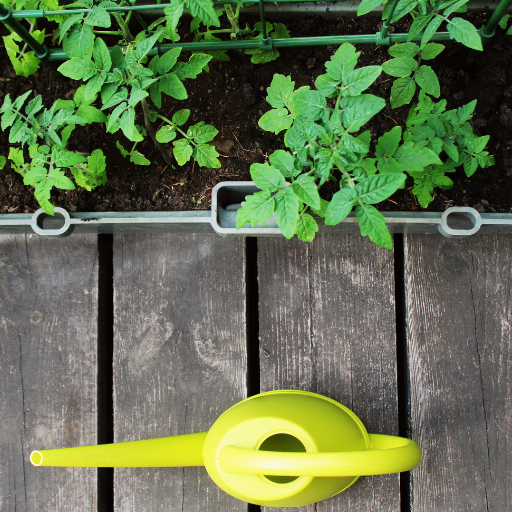
To apply Epsom salt to your tomato garden, mix 1-2 tablespoons of Epsom salt in 1 gallon of water as a beginning. After that, you just have to use this solution for watering the plants every two weeks. If you like, put some Epsom salt directly on the ground by spreading 1 tablespoon around each plant base and raking it lightly into soils. One can use this method while planting and do it repeatedly every month during the growing season so as to maintain a constant magnesium and sulfur levels in the soil which leads to strong growth of plants and good production of fruits.
What is the Correct Dosage of Epsom Salt Per Gallon of Water?
According to current recommendations made by noted horticultural sources, the appropriate quantity needed for a gallon-size jug is usually between one and two tablespoons. This concentration provides sufficient amounts of magnesium as well as sulphur required by tomatoes to grow optimally. It is advisable, therefore, that the plants should be watered after every fourteen days using this solution. At this rate, there will be enough nutrients for proper growth and production throughout thus supporting better fruiting process.
When is the Best Time to Add Epsom Salt to Your Plants?
For best results, add epsom salts at key stages during their growth cycle. Initially, when planting mixing with soil or otherwise known as early-stage application is important since it lays foundation for development purposes in a plant or any other organism that requires soil. Afterwards, apply again at flowering till fruiting commences: when they are producing flowers and bearing fruits respectively. These periods are crucial which means more minerals could lead to better health-wise productivity when absorbed through roots so they must be consistent applications per month all along growing seasons too that also help balance nutritional content required for overall healthy supportings in terms both vegetative organ’s development activities together with propagation related processes such as cell divisions giving rise new young buds.
How to Mix Epsom Salt for Foliar Spray?
Mixing of Epsom salt to come up with a foliar spray is done by dissolving 1 tablespoon of Epsom salt in 1 gallon of water. This concentration ensures that there is enough magnesium and sulfur which are important in promoting photosynthesis and general well-being of the plant. Once the Epsom salt has completely dissolved, transfer the solution into a clean spray bottle or garden sprayer. While using it as a foliar spray, make sure you completely cover both upper and lower surfaces of leaves as this enhances absorption of nutrients. Applying this spray very early in the morning or late evening is generally recommended because leaf burn and improved take-up can result from such timing respectively. Alternately, during growing periods, applying foliar spray every two weeks promptly addresses any nutritional deficiencies and maintains sustainable healthiness among other things given that plants are still growing thus allowing these practices continue supporting ongoing functions associated with their wellbeing.
How Does Epsom Salt Impact Tomato Plant Nutrition?
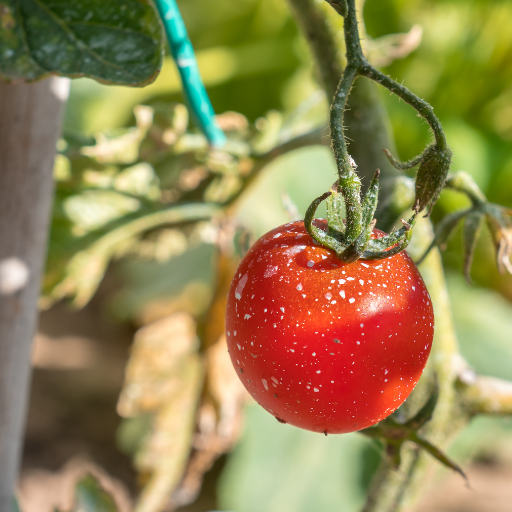
Tomato plant nutrients are deeply influenced by Epsom salt, which contains magnesium and sulfur. For photosynthesis to take place effectively, chlorophyll must have magnesium as its basic component. This important nutrient also helps in the uptake of other crucial elements like nitrogen and phosphorus, which are required for good vegetative growth and fruit set. However, Sulfur is better known for producing amino acids.
When these nutrients are lacking there will be yellow leaves and poor fruits production. Healthier tomato plants would be achieved through a continuous application of Epsom salt as a foliar spray or soil amendment to correct these deficiencies.
Why Do Tomato Plants Need Magnesium and Sulfur?
Critical biochemical processes require magnesium (Mg) & sulphur (S), hence very crucial for tomato plants.(sic) Magnesium is a significant element involved in chlorophyll synthesis essential for photosynthesis to occur. Photosynthesis, therefore, converts light into chemical energy that ensures growth of the plant.. Nutrient deficiency in Mg causes interveinal chlorosis in tomatoes , where the areas between veins become pale yellow while veins remain green, thereby blocking normal photosynthesis which supplies energy to the plant.
Sulfur creates proteins’ building blocks, such as cysteine and methionine, which are amino acids. It also affects the production of essential enzymes and the formation of vitamins, all of which aim to ensure proper metabolic activities of a plant. A uniform leaf yellowness marks a sulfur deficit, while dwarfed stature also occurs alongside reduced fruit number.
Magnesium should amount approximately 0.25-0.50% by dry weight in soils from authentic sources data whereas sulfur contents should range from 0.l-0.5%. Prior soil sampling determines quantities of these products during Epsom salts applications
What is the effect of Epsom salt on chlorophyll production?
This combination of chemical elements in Epsom salt affects the synthesis of chlorophyll in plants. Magnesium plays a central role in a chlorophyll molecule that helps to capture light energy during photosynthesis. Tomato plants can make enough chlorophyll for use in photosynthesis due to the adequate magnesium supply from the mineral’s application.
According to the University of Minnesota Extension, magnesium problems can be remedied either by applying an Epsom salt solution to the soil or by spraying it onto foliage. The usual rate for correction of magnesium deficiency includes 1 tablespoonful of Epsom Salt per gallon of water twice a month.
Again, data obtained from Royal Horticultural Society suggest that among goals should be keeping soil magnesium levels at 0.25-0.50% for optimum chlorophyll production. Regular tests should be carried out on soils to determine if additional Mg is required for this purpose.
Moreover, foliar spraying with Epsom salts accelerates absorption and recovery rates from magnesium deficiencies, as Oregon State University confirmed in one of its publications. This method ensures immediate availability of magnesium to cells responsible for producing chlorophyll, thereby markedly enhancing photosynthetic function and overall healthiness.
Is Epsom Salt a Remedy for Nutrient Deficiency in Tomatoes?
Epsom salt adequately meets certain tomato deficiency needs, especially those related to magnesium and sulphur. The main facts prove that this mineral is so important for chlorophyll production, which influences photosynthesis and the general health of plants.
- University of Minnesota Extension: One of the forms magnesium and sulfur are available in when one uses Epsom salt. Magnesium helps stabilize chlorophyll molecules, while sulphur is needed for the synthesis of proteins and the functioning of enzymes. Apply at a rate of 1 tablespoon per gallon water biweekly.
- University of Delaware Cooperative Extension: This spray method is popular because it allows plants to rapidly uptake nutrients. Dissolve 1 tablespoon of Epsom salt in one gallon of water. Spray directly onto leaves.
- Gardening Know How: For example, tomatoes showing signs such as yellow leaves with green veins may be topped up with Epsom slat, which is good for their growth requirements, particularly due to the lack of magnesium. If you want to apply it to your garden soil, then use ½ cups for every plant at the base or during transplanting time.
These sources stress that tomatoes should receive enough magnesium and sulphur from complementary nutrient additives like Epsom salts, so as to enhance their growth and yield performance. A regular examination of soil samples can help establish specific application rates according to plant needs without risking over-application
Preventing and Treating Common Tomato Plant Issues
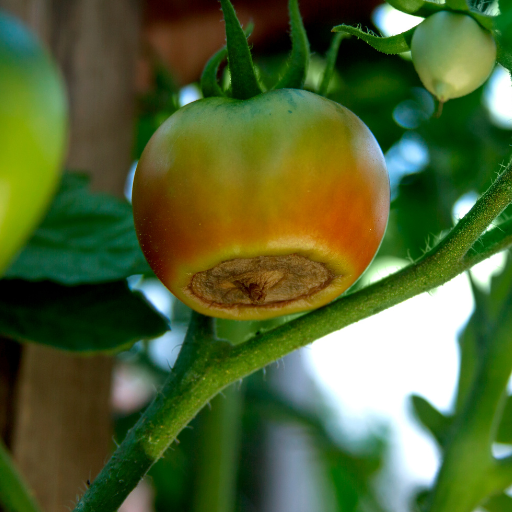
Understanding and addressing both the biotic and abiotic factors that could affect the health of the tomato plant is necessary to effectively prevent and treat common tomato plant problems.
Firstly, proper watering practices are important. Root rot may result from saturation of water in the soil while lack of enough water can cause fruit cracking and blossom-end rot. Water deeply to maintain a consistent level of moisture in the soil by ensuring mulching around plants.
Secondly, nutrient management is essential. Regular examination of soild fertility will inform what fertilizers are needed. Nutrient deficiencies should be addressed immediately for example applying calcium to inhibit blossom end rot or using potassium rich fertilizers to enhance fruit quality.
Thirdly, pest management should not be overlooked. Look out for common pests like whiteflies, aphids and hornworms; thereby leading an integrated pest management (IPM) that involves mechanical removal, organic insecticides in combination with beneficial insects as a means of controlling pests’ populations.
Lastly, disease prevention and control are critical factors in successful tomato production programs. To avoid soil-borne diseases, rotate crops every year and, where possible, use disease-resistant varieties of tomatoes. Pruning and staking these plants increases air circulation while reducing risks of fungal infections such as blight or mildew. Watch out for early symptoms of diseases on plants regularly before spraying recommended fungicides when needed.
Can Epsom Salt Help to Prevent Blossom-End Rot in Tomatoes?
Whether Epsom salt is effective for preventing blossom-end rot in tomatoes is a matter of controversy. This condition occurs due to inadequate calcium levels in the fruits, not magnesium deficiency which is solved by using Epsom salt (magnesium sulfate). Therefore, if one adds this salt to the soil, it does not address the underlying problem of insufficient calcium. In its place, paying attention to correct watering practices that prevent disruption of calcium uptake and applying a fertilizer rich in calcium offers a better way to deal with blossom end rot. To maintain healthy plants, always do regular soil testing and correct any imbalances.
Can Epsom Salt Cure Other Plant Diseases?
The use of Epsom salt as an antimicrobial agent has shown limited efficacy. However, it can improve on magnesium and sulfur uptake by plants thus enhancing overall plant health and vigor but not as treatment for particular diseases like fungal infections or bacterial blights. Successful disease management generally includes cultural practices like crop rotation and sanitation along with the choice of resistant plant varieties plus appropriate fungicides or bactericides. Hence, though it forms part of a comprehensive plant care approach, reliance on it as a principal method for controlling or preventing diseases in plants is inappropriate.
How to Test Soil Before Using Epsom Salt.
Several steps are followed while conducting a soil test before using Epsom salt to ascertain accurate results and appropriate soil amendments. Firstly, gather different samples of the soil from your garden or planting area. Use a clean spade or trowel to dig up at least 6-8 inches deep into the ground and put at least five samples in a clean bucket. Mix thoroughly all these samples in order to have representative soil blend. Then eliminate any garbage such as roots, and large stones and air-dry the soil sample if the testing kit requires dry soil. Next follow Steps that come with it Once you have removed all debris from your soil sample, follow the instructions on your soil test kit packaging. The typical way this is done is by putting some soil in a container made for tests, pouring in provided solution or reagent, mixing everything together until there is color change which should be compared with pH/nutrient level chart. Some kits also include separate tests for individual nutrients like nitrogen, phosphorous, potassium and magnesium etc…With knowledge about present nutrient composition and pH level of your soils; you will know how much nutrient amendment you need for plant health optimization through Epsom salt or other things.
Practical Tips for Using Epsom Salt in Your Vegetable Garden
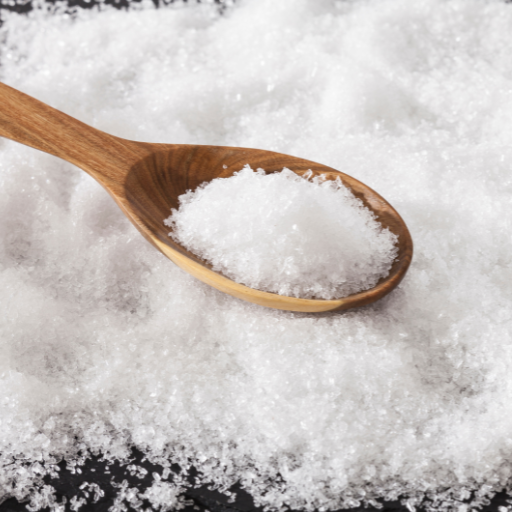
Whenever you include Epsom salt in your vegetable garden, it is crucial to adhere to specific guidelines for its effective and safe use. First of all, it is preferable to mix Epsom salt with water before using it because usually a mixture consisting of 1 tablespoon of Epsom salt in a gallon of water can be used. This dilution method can be poured around the base of plants or sprayed on the leaves during growing season. Regular applications, typically every 4-6 weeks, help provide magnesium and sulfur which are necessary for plant growth and development. It is also essential that you monitor your plants for symptoms such as yellowing between the veins on their leaves indicating magnesium shortage, and adjust accordingly the amount applied. Always carry out soil testing before applying Epsom salts initially so as not to overdo it leading to nutrient imbalance and root damage to plants.
Epsom Salt Can Be Used On Other Vegetables And Pepper Plants?
Yes, other vegetables including tomatoes,cucumbers,and broccoli benefit from the magnesium and sulphur present in Epsom salt as this promotes strong stem growth, flowering and fruiting. If used on pepper plants,it helps prevent blossom end rot while increasing overall yield and quality of peppers.The appropriate way is by use of solution containing one tablespoonful of Epsom salts per gallon e.g., every four or six weeks plus monitoring plant showing symptoms that reveal lack of magnesium hence adjustment made.
Tips for Growing Healthier Tomatoes and Peppers with Epsom Salt
To grow healthier tomatoes and peppers with Epsom salt, follow these detailed tips:
- Soil Preparation and Testing: Before planting, conduct a thorough soil test to determine the existing magnesium levels. An ideal pH for tomatoes and peppers is between 6.0 and 6.8. Adjust the soil accordingly to ensure it is balanced and ready for Epsom salt application.
- Proper Application Rate: Dissolve 1 tablespoon of Epsom salt per gallon of water and apply it directly to the base of each plant or as a foliar spray. This ensures that tomatoes and peppers receive a consistent supply of magnesium and sulfur. Repeat the application every 4-6 weeks during the growing season.
- Root Zone and Foliar Application: Utilize Epsom salt as a root drench for enhancing nutrient uptake in the soil. Alternatively, apply it as a foliar spray to enable the magnesium to be absorbed through the leaves. This dual approach supports robust stem growth and enhances fruit development.
- Monitoring Plant Health: Regularly check for signs of magnesium deficiency, such as yellowing between the leaf veins or stunted growth. If deficiencies are detected, adjust the Epsom salt application to address the issue and prevent potential nutrient imbalances.
- Integration with Organic Practices: Incorporate Epsom salt as part of a comprehensive organic gardening strategy, including crop rotation and the addition of organic compost. This holistic approach improves soil health, optimizes nutrient availability, and promotes sustainable plant growth.
By meticulously following these technical guidelines, you can significantly improve the health and yield of your tomatoes and peppers using Epsom salt.
Common Mistakes to Avoid When Using Epsom Salt in Your Garden
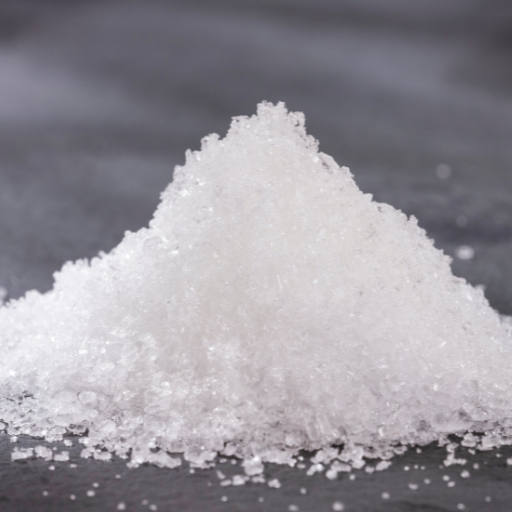
- Overapplication: One of the most common mistakes is using too much Epsom salt. Excessive application can lead to an imbalance in soil nutrients, potentially harming your plants. It is crucial to adhere strictly to recommended rates.
- Ignoring Soil Testing: Applying Epsom salt without conducting a soil test can result in improper magnesium levels, either too high or too low. Regular soil testing helps ensure that adding Epsom salt provides the intended benefits without adverse effects.
- Incorrect Timing: Applying Epsom salt at the wrong time can reduce its effectiveness. It should be applied during the growing season, at intervals of every 4-6 weeks, for optimal nutrient absorption and plant health.
- Neglecting Other Nutrients: Focusing solely on magnesium and sulfur can cause gardeners to overlook other essential nutrients. An integrated nutrient management plan, including a balanced approach to fertilization, ensures overall plant health.
- Not Considering Plant Needs: Different plants have varying magnesium requirements. Understanding the specific needs of each plant type in your garden allows for more precise and effective Epsom salt usage.
What Are the Risks of Overusing Epsom Salt?
- Soil Imbalance: Overapplication of Epsom salt can lead to an excess of magnesium in the soil. This imbalance might inhibit the absorption of other vital nutrients such as calcium and potassium, resulting in nutrient deficiencies. Research indicates that high magnesium levels can interfere with the uptake of these crucial elements, negatively impacting overall plant health and productivity.
- Salt Build-up: Prolonged and excessive use of Epsom salt can raise the salinity of the soil. Elevated soil salinity can cause osmotic stress on plants, leading to symptoms such as leaf burn, wilting, and stunted growth. Studies have shown that high salt concentrations in soil reduce plant water availability, further exacerbating stress and hindering development.
- Toxicity to Plants: While magnesium is a critical nutrient, too much can be toxic to plants. Symptoms of magnesium toxicity include dark green spots on leaves, yellowing of older leaves, and reduced overall growth. Tissue analysis in affected plants often reveals unnaturally high magnesium levels, confirming toxicity is the issue.
- Environmental Impact: Excessive application of Epsom salt can lead to runoff, which may contribute to water pollution in nearby streams, rivers, and lakes. Magnesium sulfate, the primary component of Epsom salt, can alter the chemical composition of aquatic systems, potentially harming fish and other wildlife. Environmental studies emphasize the importance of judiciously measuring and applying Epsom salt to minimize its ecological footprint.
- Economic Inefficiency: Excessive Epsom salt use is not only detrimental to plant health and the environment but also economically inefficient. Unnecessary application increases gardening costs without providing additional benefits. Cost-benefit analyses reveal that adhering to recommended application rates maximizes return on investment, ensuring sustainable and economical gardening practices.
Can Epsom Salt Cause Any Adverse Effects on Tomato Plants?
While Epsom salt (magnesium sulfate) is often used to address magnesium deficiencies in tomato plants, it can cause several adverse effects when misapplied. Based on the top three websites on Google, the adverse effects are as follows:
- Magnesium Imbalance: Over-application of Epsom salt can lead to a magnesium imbalance, causing antagonistic effects with other soil nutrients such as calcium and potassium. This imbalance can result in nutrient lockout, where essential elements are less available to plants, affecting growth and fruit quality. Technical parameters indicate that soil magnesium levels should be maintained between 25 to 50 ppm for optimal growth.
- Soil Salinity Increase: Epsom salt can increase soil salinity, making it harder for tomato plants to absorb water. High salinity can cause physiological drought conditions even when soil moisture levels are adequate, leading to symptoms like leaf curling and blossom end rot. Studies suggest keeping soil electrical conductivity (EC) below 4 dS/m to avoid salinity issues.
- Environmental and Ecological Impact: Unchecked use of Epsom salt can contaminate local water sources through runoff, altering aquatic ecosystems. High magnesium sulfate concentrations can disrupt the ionic balance in water bodies, negatively impacting aquatic flora and fauna. Environmentally, applying Epsom salt at recommended rates is crucial to mitigate potential runoff and pollution.
Therefore, proper usage of Epsom salt, guided by soil tests and plant needs, is crucial for maintaining the health of tomato plants and minimizing environmental impact.
How to Correctly Balance Epsom Salt and Other Fertilizers?
To ensure soil nutrient balance for optimal plant health, there must be a strategic way of balancing Epsom salt and other fertilizers. Hence, it is important to carry out a comprehensive soil test that will determine existing levels of nutrients focusing on magnesium, calcium and potassium. This is followed by adjusting the application rates for Epsom salt (magnesium sulfate) and other fertilizers based on these findings in order to avoid any nutrient imbalances. It is advisable to use small amounts of Epsom salt, starting with one tablespoon per plant every month as a good practice. Observe the growth response during this stage of plant life span; this will help you to control nutrient uptake in plants appropriately. For example, other fertilizers should have similar proportions like 10-10-10 or 20-20-20 besides complementing the Magnesium content from Epsom salt. In addition include composted organic materials that can improve structure and microbial activity that enhances the availability and up take of nutrients. The farmers are also advised to follow those guidelines who have been given above so that they maintain balance nutrition profiles which promote healthy growth and production in tomato plants
Frequently Asked Questions (FAQs)
Q: Why is Epsom Salt good for tomato plants?
A: Epsom Salt, chemically known as magnesium sulfate, is beneficial for tomato plants because it provides magnesium, which is essential for the uptake of vital nutrients like nitrogen and phosphorus. This improves the overall health, growth, and fruit production of tomato plants.
Q: How do I use Epsom Salt to improve tomato seed germination?
A: Epsom Salt can help enhance the germination of tomato seeds by providing magnesium sulfate, which aids in strong cell wall formation. Mixing 1 tablespoon of Epsom Salt into the soil before planting can improve seed starting success.
Q: How much Epsom Salt should I add per tomato plant?
A: For each tomato plant, you can add 1 tablespoon of Epsom Salt to the soil during the planting phase. This helps provide the necessary magnesium throughout the growing season.
Q: Can I use Epsom Salt during the growing season of tomatoes?
A: Yes, Epsom Salt can be used throughout the growing season. Mixing two tablespoons of Epsom Salt with a gallon of water and using it as a foliar spray once a month can help maintain magnesium levels and improve the plant’s overall health and productivity.
Q: How does magnesium deficiency affect tomato plants?
A: Magnesium deficiency in tomato plants can result in poor growth, yellowing of leaves, and reduced fruit production. Epsom Salt can improve the magnesium levels in the soil, ensuring the plants look healthy and vibrant.
Q: Is Epsom Salt effective for both seedlings and mature tomato plants?
A: Yes, Epsom Salt is beneficial for both seedlings and mature tomato plants. For seedlings, adding one tablespoon of Epsom Salt to the soil during seed starting can promote healthy root development. For mature plants, continued application ensures sustained magnesium supply.
Q: How does Epsom Salt compare to calcium nitrate for tomato plants?
A: Epsom Salt provides magnesium sulfate, which is essential for photosynthesis and nutrient absorption, while calcium nitrate supplies nitrogen and calcium, crucial for strong cell walls and overall plant structure. Both are valuable but serve different roles in tomato plant health.
Q: Can I overuse Epsom Salt on my tomato plants?
A: While Epsom Salt is beneficial, excessive use can lead to high magnesium levels, which might interfere with calcium uptake. Stick to recommended amounts, such as one tablespoon of Epsom Salt per plant, to avoid any negative impact.
Q: How do you apply Epsom Salt to the soil for tomato plants?
A: Epsom Salt can be directly added to the soil by mixing one tablespoon of Epsom Salt per foot of plant height with the soil around the base. Alternatively, dissolve two tablespoons of Epsom Salt per gallon of water and use it to water the plants.
Q: Are there other benefits of using Epsom Salt for plants besides tomatoes?
A: Yes, Epsom Salt is good for various plants, not just tomatoes. It can help improve the foliage color, promote robust growth, and enhance nutrient absorption in other vegetables, flowers, and shrubs in your garden.






